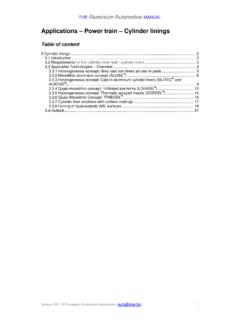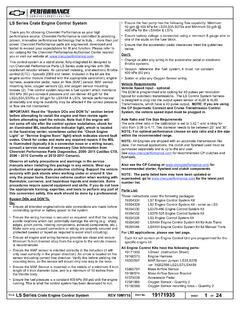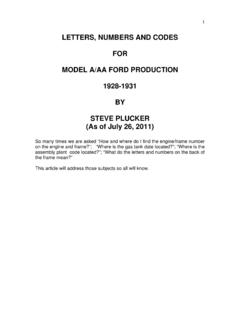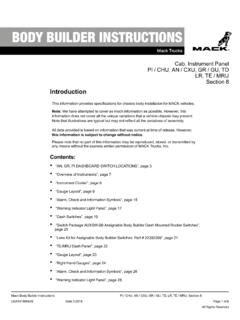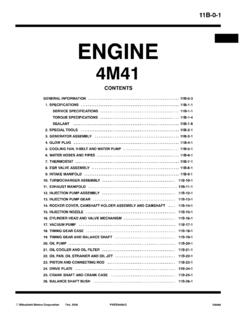Transcription of Applications Car body Body structures
1 Version 2013 European Aluminium Association 1 Applications Car body body structures Table of contents 1 body structure .. 2 body design concepts .. 2 Car body design with aluminium .. 4 Sheet-intensive aluminium body structures .. 6 Early developments .. 6 Joining technology the key to success .. 9 Jaguar s Light Weight Vehicle Technology .. 11 Aluminium spaceframe structure .. 21 The Audi Space Frame technology .. 21 Ferrari aluminium spaceframe design for niche volume production.
2 37 BMW - extrusion-intensive aluminium spaceframe designs .. 44 Mercedes-Benz aluminium spaceframe design with large castings .. 47 Spyker all-aluminium niche models based on a spaceframe design .. 59 Cars with an aluminium chassis and a separate body shell .. 60 Lotus platforms for low volume vehicles .. 60 Aston Martin s aluminium VH platform .. 63 Morgan a sheet-based aluminium chassis .. 66 Chevrolet Corvette .. 67 Mitsubishi s i car concept .. 69 Artega GT .. 70 The BMW LifeDrive 70 Mixed-material body structure designs.
3 71 BMW aluminium front end .. 71 Audi TT .. 73 Porsche s aluminium-steel hybrid body shell .. 77 Hybrid steel-aluminium body of the Audi A6 (2011) and A7 .. 79 Aluminium hybrid bodyshell of the Mercedes-Benz S class (W222) .. 81 Mixed aluminium/CFC designs .. 83 Version 2013 European Aluminium Association 2 1 body structure The core element of any car is the body structure. The car body connects all the different components; it houses the drive train and most importantly carries and protects passengers and cargo.
4 The body structure needs to be rigid to support weight and stress and to securely tie together all the components. Furthermore, it must resist and soften the impact of a crash to safely protect the occupants. In addition, it needs to be as light as possible to optimize fuel economy and performance. Over the years, various designs have been used and each of them has its benefits and drawbacks. body design concepts The oldest structural vehicle design is the body -on-frame concept. The frame typically consists of two parallel, connected rails ( ladder frame ) which the suspension and power train are attached to.
5 The rest of the body , or the shell, sits on the frame. The ladder frame design (left) as exemplified by the Chevrolet Corvette C3 (right) The body -on-frame concept was used until the early 1960s by nearly all cars in the world. The original frames were made of wood (commonly ash), but steel ladder frames became common in the 1930s. Today, the frame design is only employed for light trucks and full-size SUVs. The frame looks like a ladder, two longitudinal rails connected by several lateral and cross braces.
6 The longitude members are the main stress member. They deal with the load and the longitudinal forces caused by acceleration and braking. The lateral and cross members provide resistance to lateral forces and increase the torsional rigidity. Frames are used on trucks because of their overall strength and ability to sustain weight. The disadvantage of the frame design is that it is usually heavy and since it is a two-dimensional structure the torsional body stiffness needs to be improved. Also, the frame tends to take up a lot of valuable space and forces the centre of gravity to go up.
7 Safety is also compromised in a body -on-frame vehicle because the rails do not deform under impact; more impact energy is passed into the cabin and to the other vehicle. Most small car models switched to the monocoque construction in the 1960s, but the trend already started in the 1930s with cars like the Opel Olympia. Today, the monocoque design is by far the dominating body concept. The Ford Crown Victoria (discontinued in 2011) was the last passenger car using the body -on-frame concept. The monocoque design is a construction technique that utilises the external skin to support some or most of the load (in contrast to the body -on-frame concept where the frame is merely covered with cosmetic body panels).
8 In this case, the integral floor pan serves as the main structural element to which all the mechanical components are attached. But there are also semi-monocoque variants, the Volkswagen platform concept which includes a lightweight, separate chassis made from pressed sheet panels. In this case, both the chassis as well as the body shell are used to provide the necessary structural strength. Version 2013 European Aluminium Association 3 The monocoque construction is a one-piece structure which defines the overall shape of the car and incorporates the chassis into the body .
9 In fact, the "one-piece" chassis and body are made by welding many stamped sheet panels together. The monocoque body structure offers good crash protection as crumple zones can be built into the structure. Another advantage is space efficiency since the whole structure is actually an outer shell. Obviously, this is very attractive to mass production cars. But while the monocoque structure is highly suitable for mass production by robots, high tooling costs hinder its application for small-scale production.
10 Also the pure monocoque structure is relatively heavy. The rigidity-to-weight ratio is fairly low as the shell is shaped to benefit space efficiency rather than strength and the pressed sheet panels are not as stiff as structures made from tubes or other closed sections and/or three-dimensional components. Consequently most modern car bodies are not true monocoque designs; instead today s cars use a unitary construction which is also known as unibody design. This uses a system of box sections, bulkheads and tubes to provide most of the strength of the vehicle, to which the stressed skin adds relatively little strength or stiffness.
